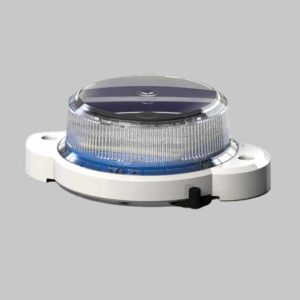Enhance railroad blue flag protection with reliable, low-maintenance lights that are shock-proof, waterproof and built to withstand the harsh demands of the railyard for at least 5 years.
Railroad blue lights signal to railroad operators that workers are on, under or between railroad rolling equipment. Blue signal protection means a clearly distinguishable blue flag or blue light by day and a blue light at night. If it’s not clearly distinguishable, it doesn’t meet requirements. Signals must be placed at each derail, and must be visible to employees seated at the controls of a locomotive. When the signal is displayed, equipment may not be coupled to or moved, rolling equipment may not pass a displayed blue signal and other equipment may not reduce or block the view of a blue signal.
According to the U.S. Department of Transportation’s “Guidelines for the Specifications of Blue Safety Flags in Railroad Operations” report, a supplier must provide a light that is uniform in appearance and that has a blue appearance that falls within the range of a safety code. Suppliers can use blue LEDs to meet these requirements—the use of a plastic blue filter over a white light is not sufficient.
For decades, railroads across the US have used blue flag protection in their yards to alert trains of workers on or near the track. Since 2008, pairing a light with these markers has been the standard. A railyard in Des Moines found that the lights they used to comply with these regulations constantly required bulb and battery replacements. After proving that the maintenance was far too time-consuming, they searched for a more efficient solution, which they found in our OL2A solar safety light.


